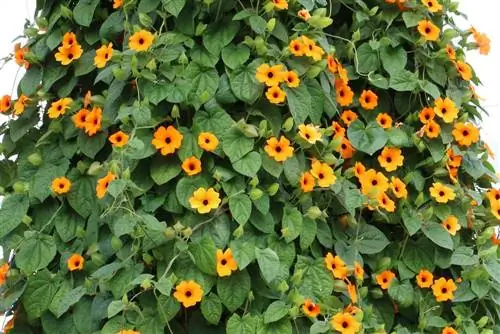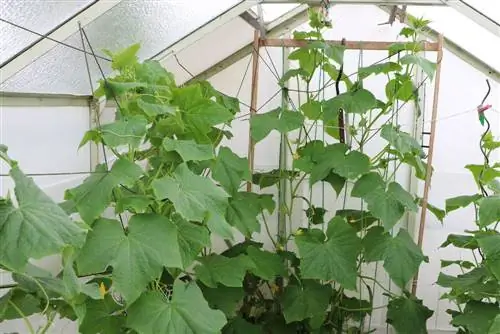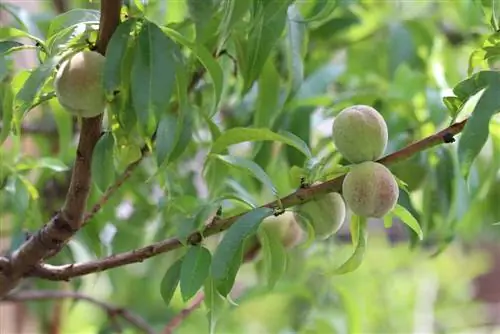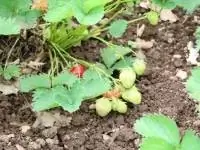- Author admin [email protected].
- Public 2023-12-17 03:39.
- Last modified 2025-01-24 12:45.
The cranberry, botanically Vaccinium vitis-idaea, belongs to the blueberry plant genus. It should not be confused with the cranberry, which is often offered as a “cultivated cranberry”. However, these are two different types. In nature, the cranberry can be found in moors and mountain heaths and also thrives well above 1,000 meters above sea level.
Care as an outdoor plant
Here are our care instructions:
Location
Cranberries do not place great demands on the location if they are planted in the right soil. The dwarf shrubs prefer to be in a semi-shady location, but they also feel comfortable in a sunny spot. With a maximum height of 40 centimeters, they can be planted under other shrubs, such as rhododendrons, or as ground cover.
Soil & Substrate
When it comes to soil, cranberries are picky, especially if you want a bountiful harvest. They should definitely be placed in slightly acidic soil with a pH of 5 to 6. In addition, the soil should be loose and humus-rich. It does not tolerate calcareous soils. If the soil in your garden does not meet these requirements, you can adapt it to the cranberries' wishes. The following mixtures have proven themselves:
- pH-neutral topsoil with one fifth sawdust
- Work peat or ericaceous soil into soil that is too acidic
Tip:
With test strips from specialist retailers you can easily check the quality of your soil without any chemical knowledge.
Plants
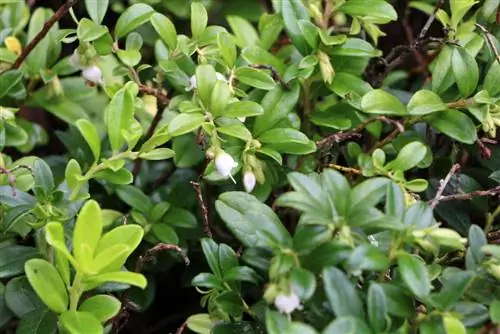
Cranberries can be planted as solitary plants or in a group. If they are planted in the garden bed, growing them in rows is recommended. The planting distance should be approximately 30 to 40 centimeters between plants and rows. If the dwarf shrubs are used as ground cover, you should not plant more than eight plants per square meter. The planting hole should be about twice the size of the root ball. To avoid waterlogging, you should create a drainage layer made of gravel or clay shards. Once you have planted the dwarf shrubs in the ground, water them generously.
Planting time
Cranberries can be planted almost all year round. However, the ideal planting time is in the autumn months of September and October, as the ground is still warm at this time and the plants can root well. If you missed this point or frost occurred earlier, plant the dwarf shrubs next spring as soon as there is no longer any great risk of frost.
Care
If the cranberries are happy with the soil and location, then they don't need much care. However, caution is advised when using weed killers, as the dwarf shrubs are extremely sensitive to these products. Therefore, to protect the plants, it is better to remove weeds by hand.
Pouring
Cranberries only need a little water to grow lushly. However, the soil should never dry out completely. They usually get by with natural rain, but you should water the plants during hot periods. Even in a nice autumn, make sure that the plants get enough water. Because they are still thirsty when other garden plants are no longer watered.
Fertilize
Cranberries do not need to be fertilized. However, you can give the dwarf shrubs compost or horn meal as fertilizer once a year. If you want to provide the dwarf shrubs with additional nutrition, then you should definitely use a lime-free fertilizer.
Cutting
Cranberries do not need regular pruning. However, you should thin out the dwarf bushes a little after flowering in May/June. This allows the sun's rays to penetrate deep into the interior of the bushes and you can harvest lots of red berries.
Wintering
Cranberries are extremely frost and winter hardy. The evergreen dwarf shrubs can survive temperatures in the double-digit minus range without any problems. Even fresh shoots don't mind temperatures down to minus three degrees Celsius for a few days. Therefore, they generally do not need any special winter protection.
Tip:
In very cold regions or during longer periods of around minus 20 degrees Celsius, you should cover the dwarf shrubs with pine branches to be on the safe side.
Propagate
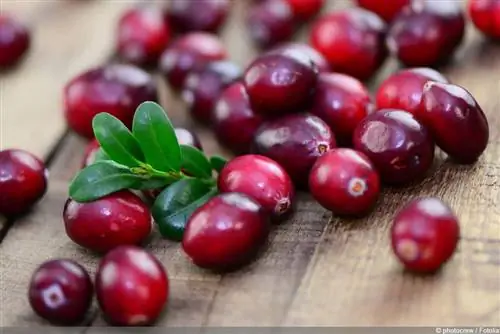
Cranberries are propagated by lowering plants. The ideal time for propagation is autumn. This means it can develop strong roots over the winter and can be separated from the mother plant and then used next spring. To ensure propagation is successful, proceed as follows:
- slightly scratch individual shoots of the mother plant
- Bend the sinker into a small groove in the ground
- fix
- Cover the sinker with earth
- water lightly
After about half a year, the sinker should be strong enough to be separated from the mother plant. Now it goes into the ground in its new location according to the planting instructions.
Bucket Culture
Cranberries don't necessarily have to be planted in the garden. You can also easily grow the dwarf shrubs on the balcony in a larger pot or bucket. It is important that the planter is of the appropriate size. It should have a capacity of at least 20 liters. It should also have drainage holes so that excess water can drain away, as the dwarf shrubs cannot tolerate waterlogging. In addition, you should create a drainage layer of approximately five centimeters at the bottom of the bucket. This also prevents waterlogging.
Substrate & Insertion
Since cranberries don't like pure soil in the pot, you should mix the garden soil with peat. As with our colleagues in the garden, the pH value must be right when growing in containers. To insert, dig a hole in the soil and place the plant in the center of the pot. Then fill the bucket with soil.
Tip:
Do not fill the bucket to the brim with soil, as this will make watering later more difficult.
Once the cranberry has been inserted and the bucket has been filled with soil, press it down lightly and water the dwarf shrub generously.
Location
In order for the cranberry to feel really comfortable, it needs a sunny or semi-sunny spot on the balcony or terrace. You should think carefully about the space before planting, because cranberries don't like to move.
Fertilizing & Watering

So that the cranberry thrives in the pot, you should fertilize it with a slow-release fertilizer after planting. After that, the dwarf shrub does not need any further fertilizer. When grown in containers, cranberries need to be watered regularly. The plants can survive without fresh water for a few days, but the substrate should always be kept moist. If possible, you should use stale rainwater for watering as it contains less lime than tap water.
Cutting
So that the sun's rays can penetrate into the interior of the dwarf bush, cranberries must be thinned out regularly. It's best to cut off older shoots at the beginning of winter.
Wintering
Cranberries are very frost-resistant, but only when they are planted outdoors. That's why they survive the winter on the balcony or terrace with only winter protection. This is primarily aimed at protecting the roots, as they are not adequately protected by the thin wall of the planter and can freeze. To ensure that the cranberries get through the winter well, proceed as follows:
- Cover pots with a cold protection fleece
- if applicable. put a tarp over it
- to prevent cold feet, place pots on a wooden or Styrofoam platform
- Covering plants with a fleece
- Place cranberries in a place protected from the wind
If you have several pots with cranberries, place the plants close together. This brings additional warmth. Winter protection is removed when the temperature is consistently around zero degrees Celsius.
Tip:
Since cranberries need some water even in winter, you should ensure good access to the covered plants.
Repotting
Cranberries like to spread, so they need to be repotted at regular intervals. You will know the right time when the plant almost stops growing. This is the sign of a pot that is too small. To ensure that the dwarf shrub thrives again, you should repot it in autumn or spring. Then it not only grows again, but also thanks you with lots of berries.


